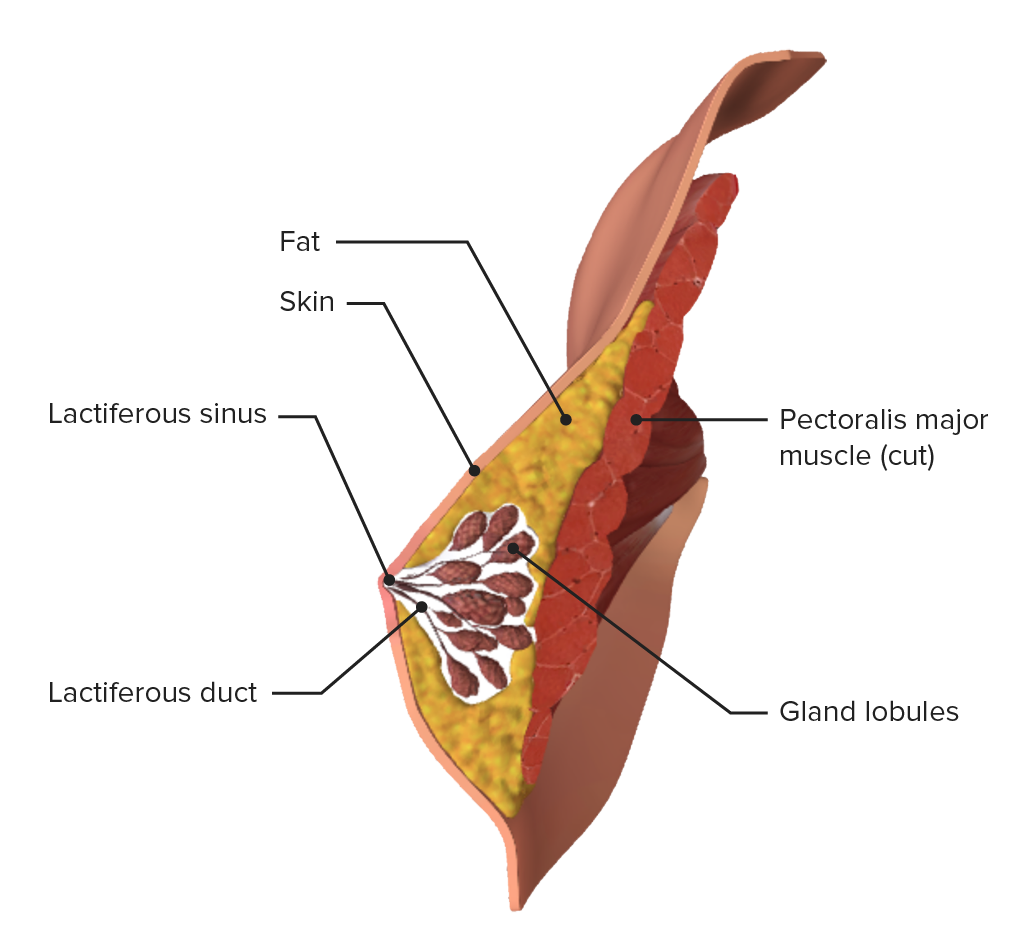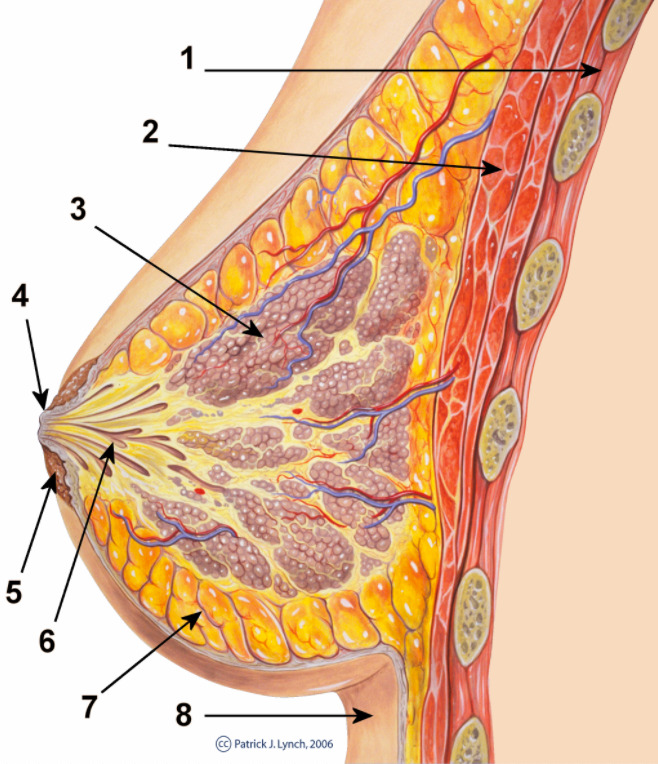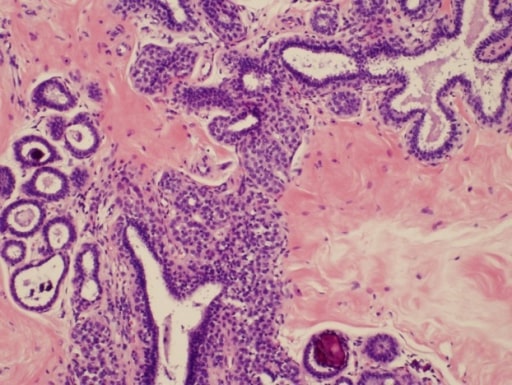Playlist
Show Playlist
Hide Playlist
Breastfeeding and Common Breast Conditions
-
Slides Breastfeeding Obstetrics.pdf
-
Download Lecture Overview
00:01 Now, let's discuss breastfeeding. 00:05 So there are several benefits to breastfeeding. 00:07 Both maternal and fetal. 00:08 For that reason we do encourage breastfeeding in most situations. 00:12 There are some indications such as moms are infected with HIV Where breastfeeding is contraindicated. 00:20 However, in most situation it is definitely encouraged. 00:23 So let's go through some of those maternal benefits. 00:26 Weight loss after pregnancy. 00:28 Decreased unintended pregnancy. 00:30 As it can sometimes inhibit ovulation. 00:33 Decreased rates of hypertension and cardiovascular disease in the mom over her lifetime. 00:37 There's also a decreased rate of breast and ovarian cancer over her lifetime. 00:42 This is thought to be because during the time of breastfeeding estrogen levels are lower. 00:47 And without having an ovulation that thought to be protected against ovarian cancer. 00:54 And then the lower rates of postpartum depression. 00:56 And this is thought that because of breastfeeding there's an increased bonding between mom and the baby. 01:02 So fetal benefits. 01:03 Decreased childhood common illnesses. 01:06 So through the IgA antibodies when baby breast feeds, he's able to get some antibodies from mom to protect him from different illnesses. 01:16 Decreased rates of obesity in babies that were breast fed. 01:18 And again there's increased bonding between mother and infant. 01:22 So that not only helps mom to decrease the risk of postpartum depression but it also helps infant. 01:27 And although this is not a completely proven, we think that babies that are breast fed are also cognitively perform better in school. 01:38 So let's take a case. 01:40 A 27 year old Para 1 female that delivered a healthy female by vaginal delivery 2 weeks earlier, presents to your office with complaint of bilateral breast pain. 01:50 She reports the baby has had difficult latch so she is mostly pumping to produce breast milk. 01:56 She reports a low grade fever. 01:58 On physical exam both breast are firm and tender with no erythema. 02:03 What diagnosis best describes this patient's condition? A. Mastitis. 02:08 B. Engorgement. 02:09 C. Galactocele. 02:10 or D. Breast abscess. 02:12 Well let's talk about some issues that we can have with breastfeeding and see if we can find the answer. 02:18 So there four common breast conditions that we see with breastfeeding. 02:22 Engorgement, Mastitis, Galactocele and Breast abscess. 02:25 With Engorgement, the breast are full of milk and they're just not completely emptying. 02:31 This can be bilateral. 02:33 Patients can have a low grade fever. 02:36 It's common when there is problem with the latch. 02:39 And treatment is just to increase breastfeeding, warm compression and massage. 02:44 You are just trying to get those milk ducts to empty. 02:48 Next is mastitis. 02:49 Now this is actually an infectious process. 02:53 Mastitis is usually unilateral. 02:55 The breast is usually warm. 02:56 There is erythematous streaking. 02:59 The most common culprit is Staphylococcus aureus and the treatment is antibiotic. 03:03 Dicloxacillin as well as continue breastfeeding. 03:09 The next is Galactocele. 03:10 So this is a cyst that can form in the breast because of a blocked milk duct. 03:16 So with the galactocele, there's usually a palpable tender, firm mass. 03:20 There's no fever because remember it's not infectious. 03:24 Usually unilateral. 03:25 And the treatment is the same as Engorgement. 03:27 Increased breastfeeding, warm compresses and massage. 03:30 Again you're just trying to get that milk duct to empty. 03:35 And then finally we can have breast abscess which is actually an infectious process. 03:41 This is usually unilateral. 03:42 There's fluctuant mass. 03:45 Patients can have fever, malaise. 03:47 And the treatment for this abscess is the same as any abscess. 03:50 It's incision and drainage followed by antibiotics. 03:53 So let's go back to our patient. 03:56 Again she's a 27 year old para 1 female that delivered a healthy female by vaginal delivery 2 weeks earlier. 04:02 She's coming to your office with complaint of breast pain. 04:04 She reports the baby had difficult latching. 04:07 And she is mostly pumping to produce breast milk. 04:10 She reports a low grade fever. 04:12 On physical exam both breasts are firm and tender with no erythema. 04:18 So what do you think is going on with this patient? Is it A. Mastitis. 04:22 B. Engorgement. 04:24 C. Galactocele. 04:27 or the D. Breast abscess. 04:27 That's right the answer is Engorgement. 04:31 Remember with Engorgement, is bilateral, such as with our patient. 04:34 They have low grade fever. 04:36 That will take out the option of Mastitis as that's usually unilateral. 04:41 Galactocele remember has no fever. 04:43 And with Breast abscess, that's also unilateral and there's a fluctuant mass on physical exam.
About the Lecture
The lecture Breastfeeding and Common Breast Conditions by Veronica Gillispie, MD, MAS, FACOG is from the course Postpartum Care. It contains the following chapters:
- Breastfeeding
- Common Breast Conditions
Included Quiz Questions
Breastfeeding is contraindicated in which of the following patients?
- Women with HIV
- Women with mastitis
- Women with a galactocele
- Women with an untreated breast abscess
- Women suffering from bilateral breast engorgement
Which of the following is associated with breastfeeding?
- Lower risk of unintentional pregnancy
- More difficulty losing weight post-partum
- Higher lifetime risk of breast cancer
- Higher risk of unintentional pregnancy
- Higher lifetime risk of cardiovascular disease
A 27-year-old mother who just had a baby 3 weeks ago presents to your office with a complaint of almost one week of bilateral breast pain and tenderness. She states she works full time and only gets 10 minutes every 4 hours to pump, so she is unable to completely empty her breasts while at work. She reports a somewhat painful latch when she feeds her newborn daughter in the evenings. She hasn't noticed any fevers. What is the most likely cause of this woman's symptoms?
- Breast engorgement
- Bilateral mastitis
- Bilateral galactoceles
- Breast abscess
- Normal symptoms of breastfeeding
A 32-year-old new mother presents to your office 6 weeks post-partum because she feels a lump in her left breast. It is slightly tender, but otherwise not too painful. She denies any fevers or difficulties breastfeeding, although it seems her newborn son prefers feeding on the right breast. What is the patient's diagnosis and how is it best treated?
- Galactocele, treat with increasing breastfeeding and warm compress
- Breast abscess that must be drained
- Unilateral mastitis that should be treated with antibiotics
- Infected milk duct, treat with drainage and antibiotics
- Blocked milk duct, treat by avoiding breastfeeding in the affected breast until the blockage clears
A 29-year-old breastfeeding mother presents to your office 4 weeks postpartum with a painful right breast. She feels somewhat malaised and tired for the past 3 days and reports intermittent fevers. On physical exam, her right breast is engorged, tender to palpation, has erythematous streaking, and feels warm to the touch. No masses are palpated. The left breast appears normal. What is the appropriate treatment for this patient's condition?
- Antibiotic treatment and continue breastfeeding
- Drainage of the abscess and antibiotic treatment
- Stop breastfeeding while on antibiotic treatment
- Stop breastfeeding until engorgement self resolves
- Ice packs to reduce engorgement and swelling
Customer reviews
5,0 of 5 stars
| 5 Stars |
|
1 |
| 4 Stars |
|
0 |
| 3 Stars |
|
0 |
| 2 Stars |
|
0 |
| 1 Star |
|
0 |
Perfect and simple explanation that will be helpful for the PANCE, thank you!







